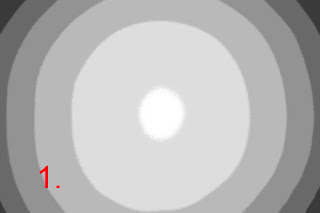After enduring the math and tedium of developing our own corrections for images with vignetting, geometric distortion, and chromatic aberration, it's worth looking at some alternatives not involving such a high pain level.
First, if you're a user of a recent version of Photoshop, you have the Lens Correction filter available. This filter has adjustments for the 3 areas we've been exploring. It works fine for estimating simple adjustments in any of these 3 areas but it doesn't have any kind of built in knowledge of adjustments required for particular lens/camera combinations. If you only need approximate corrections and like the easy-to-use interface, this is a good way to go. If, on the other hand, you have stricter requirements or you have short focal length lenses with complex mustache distortion or other more complex problems, the Lens Correction filter won't handle it.
Another option to consider is DxO Optics Pro which is a sophisticated product handling a number of image problems including those we've been discussing plus many others. This software is tied directly to your camera/lens combination by way of modules that have very specific correction parameters built in that are the result of DxO's expert lab testing. Results can be very good, the product comes with standalone and Photoshop plugin versions, and can be used to batch process large quantities of images fairly easily. On the minus side, it's not inexpensive (although certainly not overpriced for what it does), it's a bit daunting to learn the quirky interface, and it only supports a subset of camera and lens combinations. For example, at the time of this writing, it doesn't support the Canon G9 we've been using as our example in this series.
Finally, there's PTLens which is a much less ambitious effort in terms of functionality but which has a much broader camera/lens coverage than DxO. It comes with a standalone version (handling only JPEG and TIFF images) and a Photoshop plugin. In terms of cost (about 10% of DxO), simplicity, and effectiveness for its strong point, geometric distortion correction, this is a gem. It also handles vignetting and chromatic aberration but you must make those adjustments manually, unlike the corrections for geometric distortion which cover a very broad range of cameras and lenses. PTLens had its genesis from Panorama Tools roots and handles geometric distortion under the covers in the same way that we discussed using the third-order polynomial radial corrections—except you don't have to be aware of it. By the way, the manual corrections for chromatic aberration in PTLens are also analogous to what we developed using corrections for the red and blue channels. In fact, the PTLens sliders show the numeric radial deviation from 1.0 (no change) as you visually tweak the image to your satisfaction. You can interchangeably use the PTLens numbers and the d coefficients we used in hugin parameters. I routinely will use PTLens to get in the ballpark and then transfer the corrections to hugin to refine the correction to as close as I can get to eliminating transverse chromatic aberration. The PTLens Photoshop plugin can be used to handle large numbers of images simply by making a Photoshop Action to run during ACR processing for example. The one thing I don't like about PTLens is it doesn't handle very large images well, having a tendency to bomb out with memory errors. But, other than that, you'll have a hard time finding a bigger "bang for the buck".
Both DxO Optics Pro and PTLens have free trial versions which should be exploited if you're at all interested in looking at their capabilities.
Given you can buy good solutions for correcting image problems we've been discussing, you may wonder why all the trouble doing it ourselves with all those measurements and mathematical manipulations. There are a few reasons. First, none of the products mentioned above handles all camera/lens combinations. For example, DxO doesn't handle the Canon G9 and PTLens doesn't handle the Canon G9 with the Raynox wide angle adapter we mentioned back in the post about geometric distortion. Second, by doing your own measurements you can be more confident that your custom-built corrections are as accurate as possible for your particular images. And third, there's nothing like grinding your nose into the pixel-level image flaws to get a real understanding of what your equipment capabilities and limitations are.
Next up, some final thoughts on compact consumer cameras generally and the Canon G9 in particular, given what I've learned going through these image correction exercises. After that, maybe we'll get back to some real photography discussion instead of all this techie pixel-bending stuff.
Subscribe to:
Post Comments (Atom)
Vignetting Revisited
After enduring a little confusion and frustration in correcting some images from my Canon G9 camera, I investigated a little more and found ...

-
The current DSLRs are getting better characteristics making night sky photography viable: lower noise at higher ISOs and better long-exposur...
-
All camera/lens systems vignette the produced images, some much more than others. Vignetting (or more-correctly light falloff as we're d...
-
There are many reasons why an image may contain chromatic aberrations , the unexpected color casts or fringes in certain parts of the image....



No comments:
Post a Comment